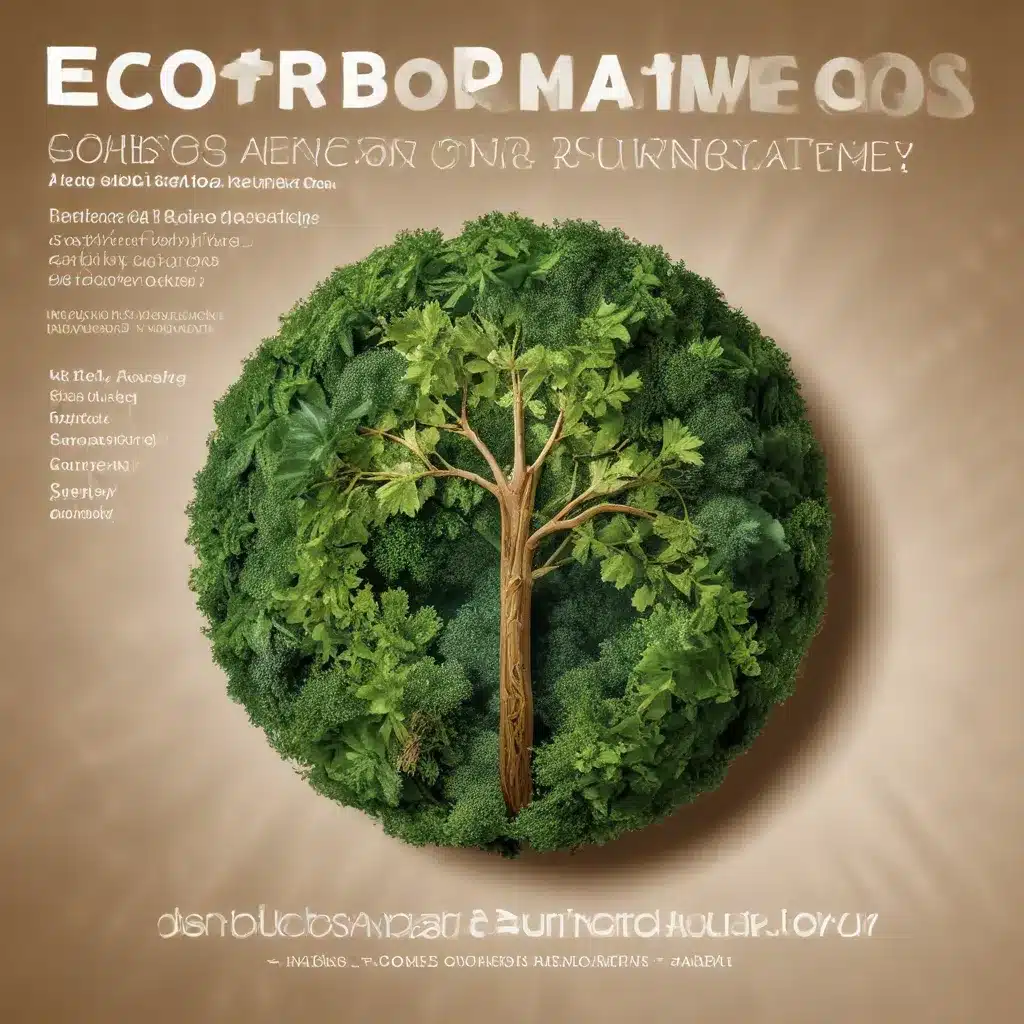
The Rise of Eco-Conscious Consumers
In the modern marketplace, consumers are becoming increasingly aware of the environmental impact of their purchasing decisions. As concerns over climate change, resource depletion, and sustainability grow, a new generation of eco-conscious consumers is emerging, seeking brands that align with their values and actively contribute to environmental preservation.
This shift in consumer behavior presents a unique opportunity for businesses to adapt their marketing strategies and embrace the power of ecobranding. By aligning their brand identity, messaging, and product offerings with environmental sustainability, companies can not only enhance their brand loyalty and market share but also foster a deeper commitment to sustainability among their customers.
Defining Ecobranding: A Multifaceted Approach
Ecobranding, at its core, is the strategic integration of environmental considerations into a brand’s identity, communication, and product development. It goes beyond simply slapping a “green” label on a product; it involves a holistic approach that encompasses the entire brand ecosystem, from sourcing and manufacturing to packaging and end-of-life disposal.
Effective ecobranding requires a deep understanding of the target audience, their values, and their environmental concerns. By aligning the brand’s messaging, visual identity, and product attributes with these considerations, businesses can create a strong emotional connection with eco-conscious consumers and position themselves as trusted partners in the sustainability journey.
Transparency and Authenticity: The Foundations of Ecobranding
One of the critical pillars of successful ecobranding is transparency. Consumers today are savvier than ever, and they demand transparency from the brands they support. Ecobrands must be able to clearly communicate the environmental impact of their products, the sustainability practices they employ, and the tangible steps they are taking to reduce their carbon footprint.
Authenticity is equally important. Consumers are quick to spot greenwashing – the practice of making false or misleading claims about a brand’s environmental credentials. Ecobrands must be able to back up their claims with verifiable evidence and demonstrate a genuine commitment to sustainability across their entire operations.
Leveraging Digital Platforms for Ecobranding
In the digital age, the reach and influence of ecobranding have been amplified through the strategic use of social media and other online platforms. By leveraging these channels, brands can effectively communicate their environmental values, share their sustainability initiatives, and engage with eco-conscious consumers in a more authentic and impactful way.
Social media platforms, in particular, have become a powerful tool for ecobranding. They allow brands to share visual content, tell compelling stories, and foster a sense of community among like-minded consumers. Additionally, the use of influencer marketing and user-generated content can help ecobrands reach a wider audience and build trust through peer-to-peer endorsements.
Measuring the Impact of Ecobranding
Evaluating the success of ecobranding efforts is crucial for businesses to understand the impact of their sustainability-focused marketing strategies. By tracking key metrics such as brand awareness, customer engagement, and sales data, companies can gain valuable insights into the effectiveness of their ecobranding initiatives and make informed decisions about future campaigns.
Moreover, the integration of sustainability-related key performance indicators (KPIs) can help ecobrands measure their progress towards environmental goals and demonstrate the tangible impact of their efforts. This data-driven approach not only enhances transparency but also serves as a powerful tool for building trust and credibility with eco-conscious consumers.
Ecobranding in Action: Case Studies of Successful Strategies
To illustrate the power of ecobranding, let’s explore a few case studies of companies that have successfully integrated sustainability into their marketing strategies:
Case Study 1: Patagonia’s Commitment to the Planet
Patagonia, the outdoor apparel brand, has long been a pioneer in ecobranding. The company’s commitment to sustainability is woven into every aspect of its business, from using recycled materials in its products to supporting environmental activism through its marketing campaigns. Patagonia’s “Don’t Buy This Jacket” campaign, which encouraged customers to repair and reuse their existing products, showcased the brand’s authentic approach to sustainability and resonated strongly with its eco-conscious target audience.
Case Study 2: IKEA’s Circular Economy Initiatives
IKEA, the global furniture retailer, has embraced the principles of the circular economy in its ecobranding efforts. The company has introduced a range of sustainable product lines, such as its “CIRCULÄR” collection, which features furniture made from recycled materials. IKEA has also implemented initiatives like furniture buyback and recycling programs, demonstrating its commitment to closing the loop and reducing waste.
Case Study 3: Unilever’s Sustainable Living Plan
Unilever, the multinational consumer goods company, has taken a comprehensive approach to ecobranding through its Sustainable Living Plan. This initiative aims to reduce the environmental impact of Unilever’s operations and products, while also engaging consumers in sustainable practices. The company has set ambitious targets for reducing greenhouse gas emissions, water usage, and waste, and it communicates these efforts through its marketing channels to build trust and loyalty among eco-conscious consumers.
These case studies highlight the diverse ways in which ecobranding can be effectively implemented, showcasing the importance of authenticity, transparency, and a deep understanding of the target audience’s environmental concerns.
Conclusion: Embracing Ecobranding for a Sustainable Future
As the demand for eco-friendly products and services continues to grow, ecobranding has emerged as a powerful tool for businesses to align their brand identity with the values of sustainability-conscious consumers. By embracing a holistic approach to ecobranding, companies can not only enhance their brand reputation and customer loyalty but also play a meaningful role in driving positive environmental change.
Through the strategic use of digital platforms, the demonstration of tangible sustainability initiatives, and a steadfast commitment to transparency and authenticity, ecobrands can position themselves as trusted partners in the journey towards a more sustainable future. As the IT Fix blog, we encourage our readers to explore the innovative marketing strategies and best practices discussed in this article and to consider how they can integrate ecobranding into their own business strategies.












